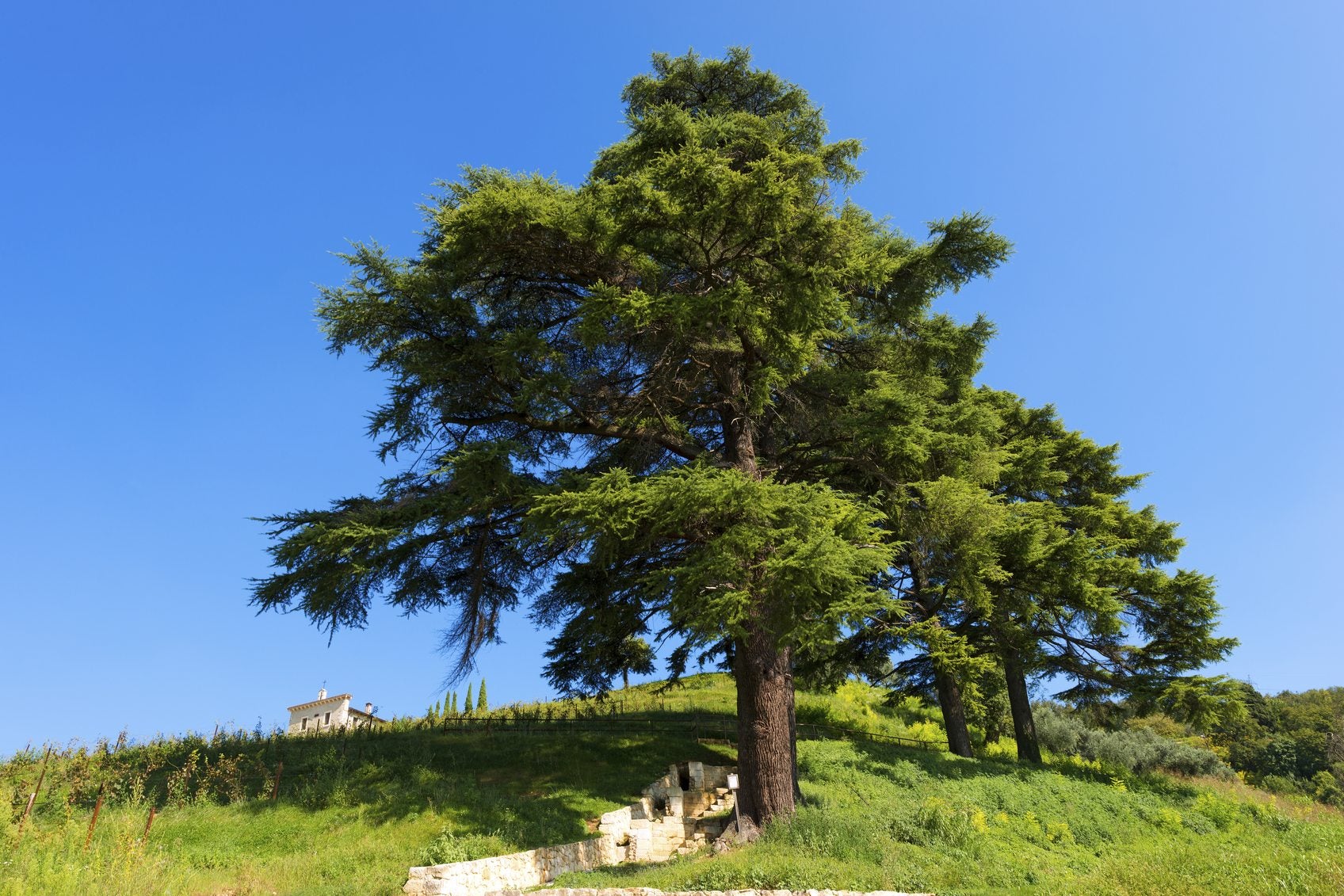Cedar Of Lebanon Tree – How To Grow Lebanon Cedar Trees


The cedar of Lebanon tree (Cedrus libani) is an evergreen with beautiful wood that has been used for high quality timber for thousands of years. Lebanon cedar trees usually have only one trunk with many branches that grow out horizontally, spiraling up. They are long-lived and have a maximum life span of over 1,000 years. If you are interested in growing cedar of Lebanon trees, read on for information about these cedars and tips about cedar of Lebanon care.
Lebanon Cedar Information
Lebanon cedar information tells us that these conifers are native to Lebanon, Syria, and Turkey. In yesteryear, vast forests of Lebanon cedar trees covered these regions, but today they are largely gone. However, people around the world began growing cedar of Lebanon trees for their grace and beauty.
Lebanon cedar trees have thick trunks and stout branches too. Younger trees are shaped like pyramids, but the crown of a Lebanon cedar tree flattens as it ages. Mature trees also have bark that is cracked and fissured.
You’ll have to be patient if you want to start growing cedar of Lebanon. The trees don’t even flower until they are 25 or 30 years old, which means that until that time, they do not reproduce.
Once they begin to flower, they produce unisex catkins, 2 inches (5 cm.) long and reddish in color. In time, the cones grow to 5 inches (13 cm.) long, standing up like candles on the branches. The cones are light green until they mature, when they become brown. Their scales each contain two winged seeds that are carried away by the wind.
Growing Cedar of Lebanon
Cedar of Lebanon care starts with selecting an appropriate planting location. Only plant Lebanon cedar trees if you have a big backyard. A cedar of Lebanon tree is tall with spreading branches. It can rise to 80 feet (24 m.) tall with a spread of 50 feet (15 m.).
Ideally, you should grow Lebanon cedars at elevations of 4,200 to 700 feet. In any event, plant the trees in deep soil. They need generous light and about 40 inches (102 cm.) of water a year. In the wild, Lebanon cedar trees thrive on slopes facing the sea where they form open forests.
Sign up for the Gardening Know How newsletter today and receive a free copy of our e-book "How to Grow Delicious Tomatoes".

Teo Spengler is a master gardener and a docent at the San Francisco Botanical Garden, where she hosts public tours. She has studied horticulture and written about nature, trees, plants, and gardening for more than two decades, following a career as an attorney and legal writer. Her extended family includes some 30 houseplants and hundreds of outdoor plants, including 250 trees, which are her main passion. Spengler currently splits her life between San Francisco and the French Basque Country, though she was raised in Alaska, giving her experience of gardening in a range of climates.